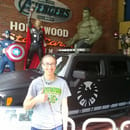Ralph Ellison’s The Invisible Man remains one of the most important novels of the twentieth century. Since February is Black History Month, perhaps there is no better time to honor the timeless classic. As a novel that considers an unnamed narrator coming to terms with his racial identity in 1950s America, some of its themes and motifs remain relevant even today. The novel itself was published in 1952, right at the turning point of the Civil Rights Movement in American society. The iconic opening line “I am an invisible man” is one that everybody has probably heard at some point in their life. The line itself means so much, despite its simplicity. The novel is also framed by a Louis Armstrong song called “What did I do to be so black and blue?” The song is an excellent metaphor for the narrator’s story, as he encounters many situations in which he suffers because of the color of his skin. It is also a great way to ground the story using a black, vernacular song. The black music authorizes the voice of the narrator and lends to his story’s authenticity.
As the narrator looks back on his brutal past, he realizes that his biggest mistake in life was believing that he could be visible in the white roles that he occupied. For example, during his time at an all-black university, he finds himself in a subservient role in which he fails to understand its nuances. As the University’s Chancellor explains to him, the most important aspect of his education is not learning how to live with the white men, but learning how to live in the roles that the white men want to see him occupy. The narrator fails to understand this, and it leads to his expulsion from the University. Disappointed but determined to make the most of his situation, the narrator goes to New York City. It is here that he encounters the Brotherhood which defines so much of his life throughout the remainder of the novel. He believes deeply in the Brotherhood’s ideology, but finds himself disappointed yet again when he realizes that the organization has just been using him to stir up the black community in Harlem.
By the end of the novel, the narrator laments his condition of being invisible. He realizes that he has no place in a white-dominated society in which he can no longer succumb to the roles assigned to him, yet his attempts to break out of everyone’s schemes have left him isolated and alone. Furthermore, he feels disconnected from the history happening around him because he exists outside of the “official” white history in which there is no place for African Americans. Thus, the only way he can have a self is by exile, living underground and away from the society that has used and abused him for his entire life.
It is a powerful consideration of the condition of African-Americans in a racist and segregated America.


